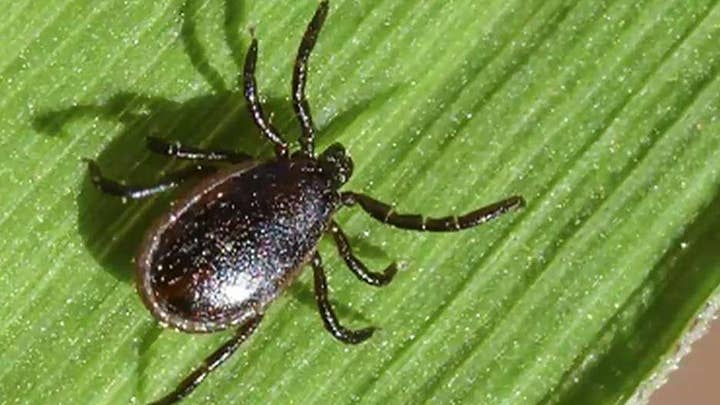What is Lyme disease?
New reports estimate that every state in the U.S. has seen cases of Lyme disease. What exactly is the tick-riddled disease and how can you be sure you have it?
A tick-borne disease that can reportedly cause symptoms more severe than those associated with Lyme disease has been found in Central New York, according to a local report.
At least two patients have been “exposed” to Borrelia miyamotoi disease, Syracuse.com reports, citing officials with Upstate Medical University, which confirmed the exposure to the outlet.
The disease is caused by a bacteria known as Borrelia miyamotoi, which is “closely related” to the bacteria that causes tickborne relapsing fever, or TBRF, according to the Centers for Disease Control and Prevention (CDC). It’s also related — albeit more distantly — to a bacteria that causes Lyme disease.
ARE YOU PUTTING YOURSELF AT RISK FOR LYME DISEASE?
Borrelia miyamotoi disease is most often caused through the bite of an infected black-legged tick, also known as the deer tick. Deer tick can also cause Lyme disease.
Borrelia miyamotoi bacteria has also been found in Western black-legged ticks, per the CDC.
Dr. Kris Paolino, an infectious disease specialist at Upstate, told Syracuse.com that the risk of Borrelia miyamotoi disease is currently low but noted the potential for more cases is “extreme.”
“Patients describe a syndrome that sounds very much like Lyme disease, but there are no rashes,” Paolino said. “The symptoms are more severe, with higher fever and more severe headaches.”
Specific blood tests help medical professionals determine if a patient is infected with the disease, according to the CDC, which noted it’s treated with antibiotics, typically doxycycline, amoxicillin or ceftriaxone.
Last year, the New York State Department of Health collected 7,600 ticks and found Borrelia miyamotoi bacteria was present in less than 1 percent, per Syracuse.com.
But Bryon Backenson, the deputy director of Communicable Disease Control at the New York State Department of Health, worries it could spread.
“It seems that with each passing year we get a few more ticks that are positive” for miyamotoi, Backenson, echoing Paolino, said. “If history is any indication, it’s one of those things that will expand and spread, and there may be more and more ticks infected as time goes on.”
The best way to prevent the disease is to protect yourself against ticks. Such measures include the use of insect repellents, staying out of high grass and wooded areas, wearing protective clothing and checking yourself for ticks.


